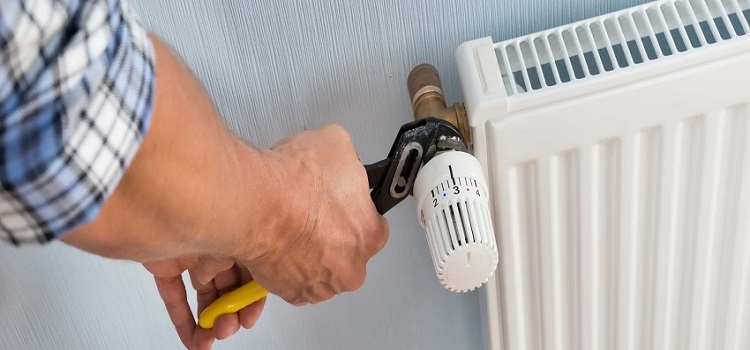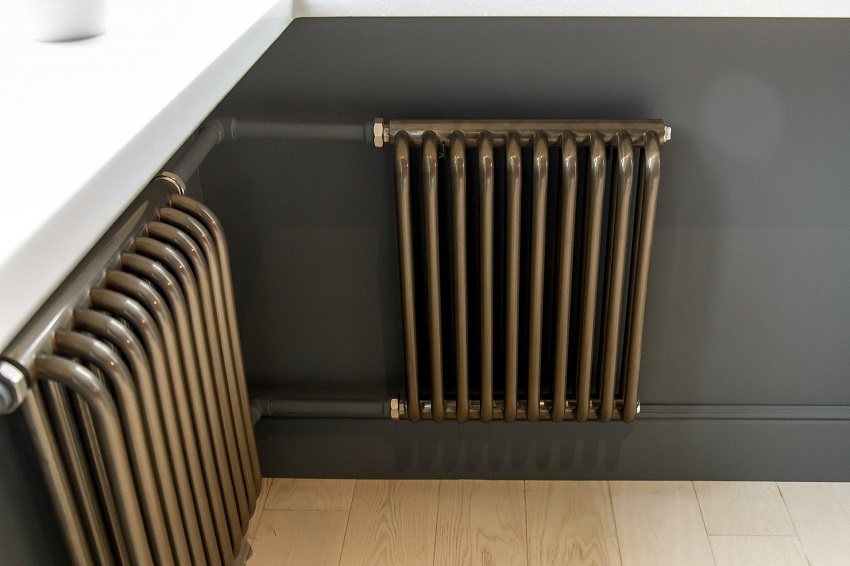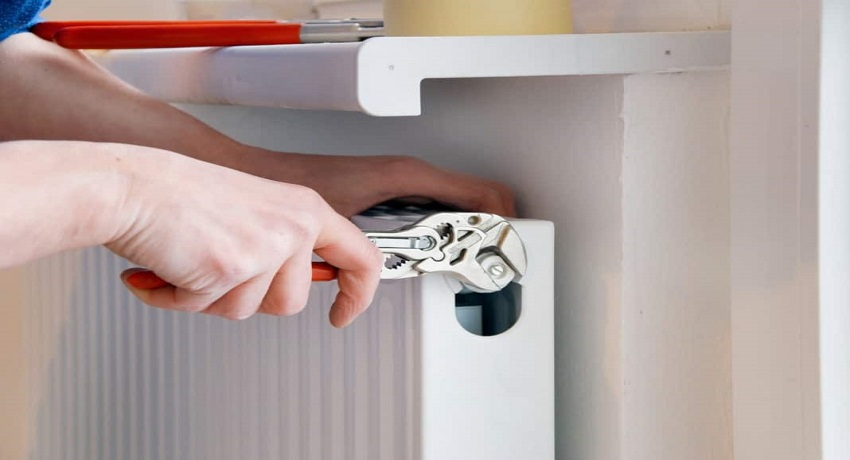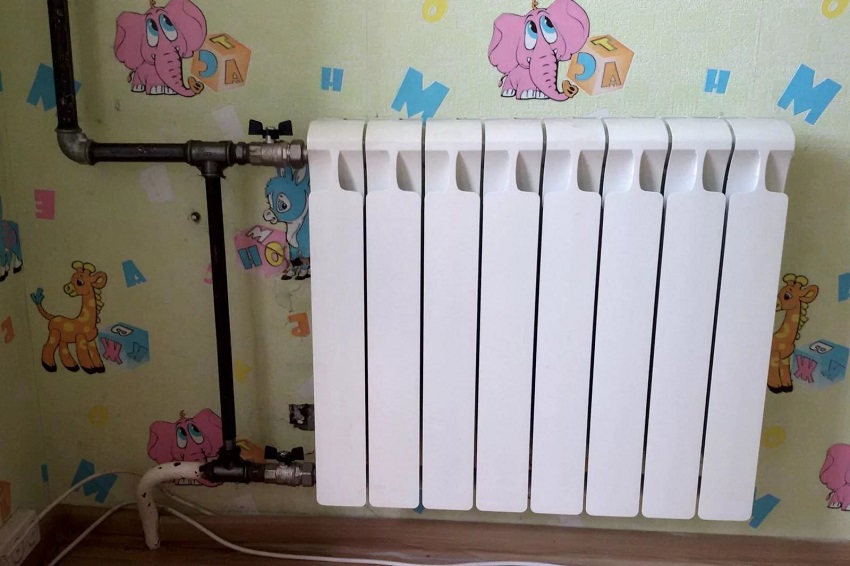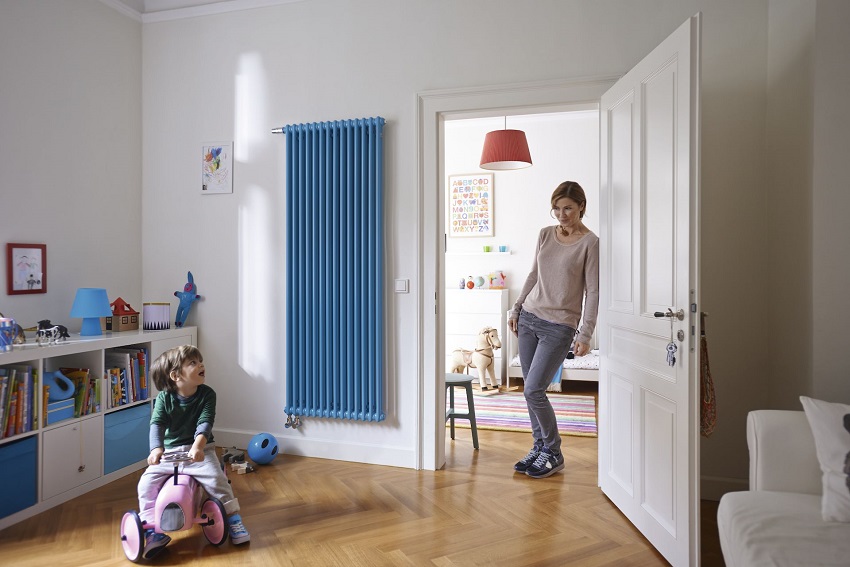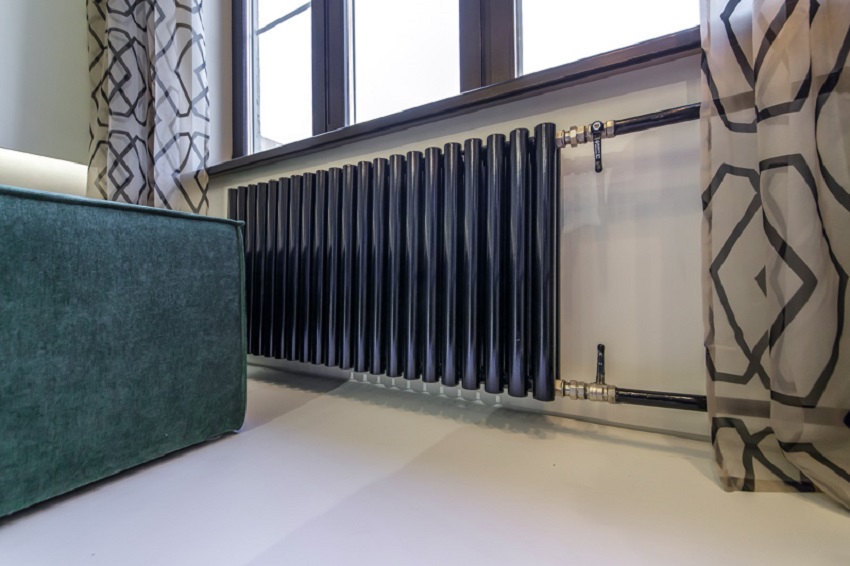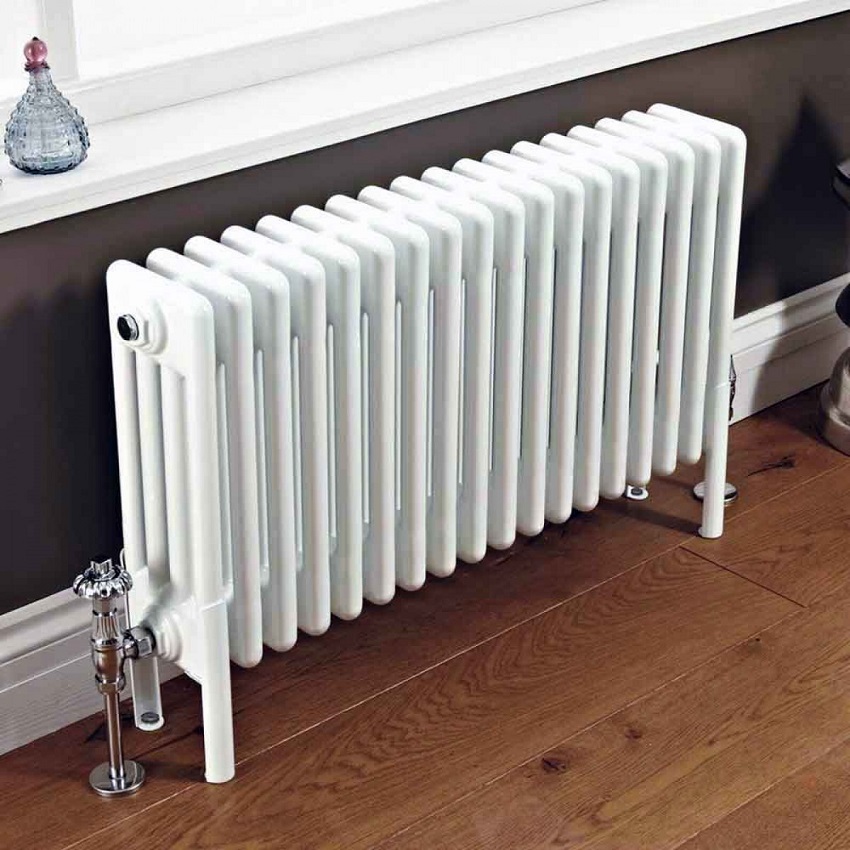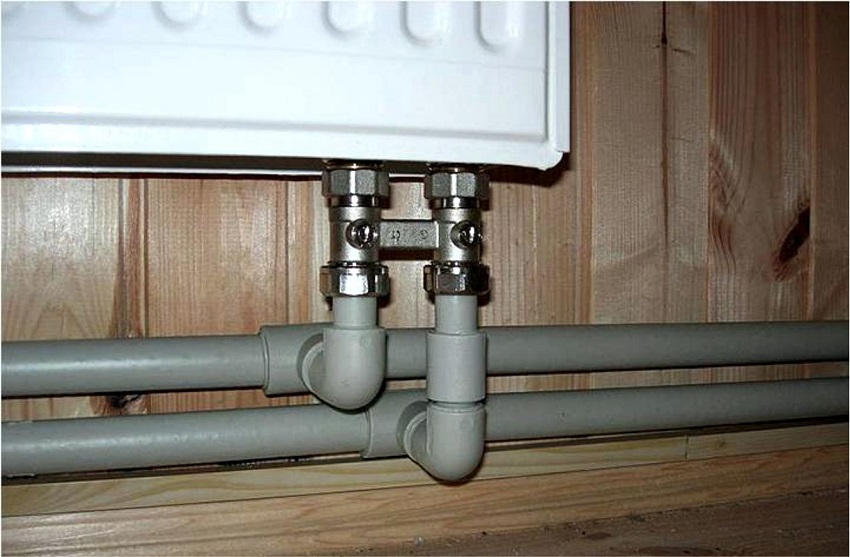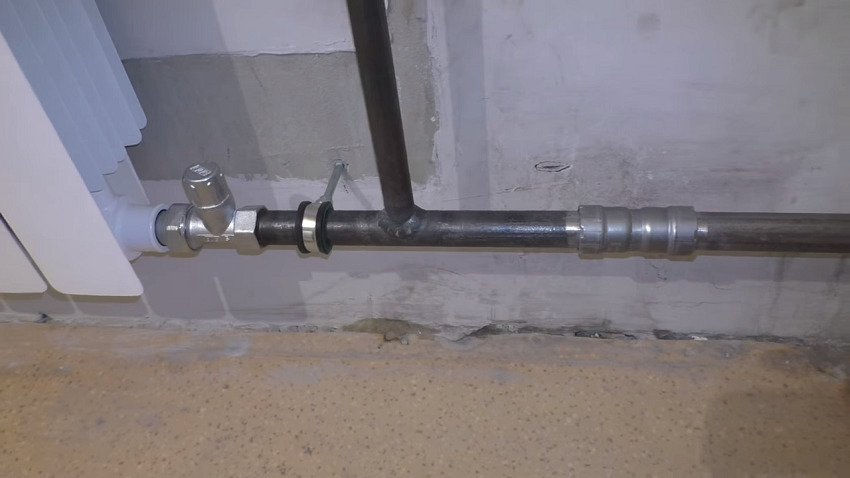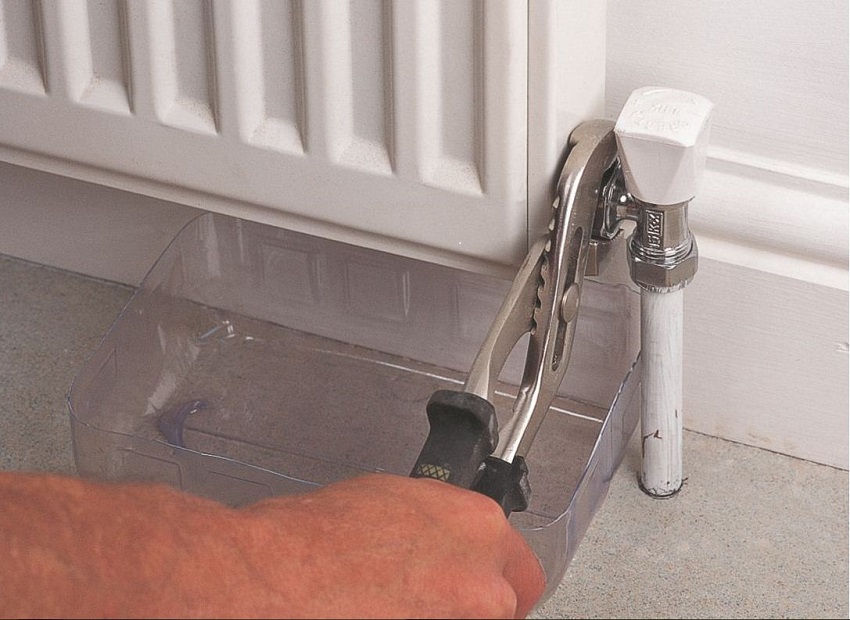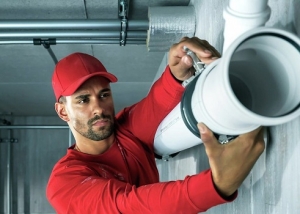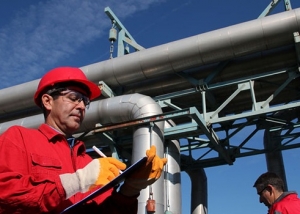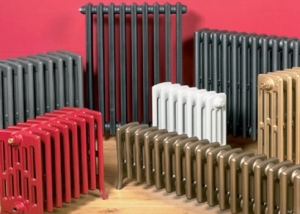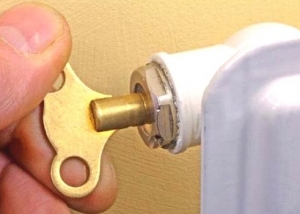In winter, overall comfort largely depends on heat. This is a general condition for multi-unit new buildings, old Khrushchev, the private sector and country houses. The idea of the functioning of the system has largely developed on the basis of the old fund. Replacing a radiator battery-radiator involves several stages - circuit closure, dismantling of old equipment and installing new equipment, criteria for choosing batteries.
Content
The need to dismantle old heating radiators
Many citizens are not satisfied with how the heating system in the apartment functions. There are several reasons for this, including the degree of deterioration of the entire system. The best option is to replace the heating radiators in the apartment and throughout the riser, if you can agree with all the neighbors. It is easier for most to hire specialists and to pay for quick and high-quality replacement of pipes and radiators in residential premises. This is quite expensive, so it’s easier and cheaper to do everything yourself.
There are several reasons for replacing old heating radiators in an apartment:
- outdated design of cast-iron "accordions" that will not fit into the interior after repair;
- cold rooms with relatively warm pipes of the heating system;
- the desire to increase the number of sections for greater efficiency from increasing the area of contact of air with a heated surface;
- the need to replace the "current" and repeatedly "bandaged" pipe clamps and tow old pipes;
- expansion of the heating circuit by connecting a loggia or balcony after reconstruction;
- the batteries are partially warm, sometimes cold, which indicates clogging and airing, which prevents the coolant from circulating fully inside;
- the gradual destruction of batteries and pipes from the inside due to rust - the risk of flooding from water hammer during the next inspection of the system;
- the desire to switch the heating system to automatic or more economical mode, providing electronics, relays and thermostats.
Where to start organizing the process of replacing the radiator battery
At first glance, it seems that replacing a heating radiator in an apartment with your own hands is a difficult process. But if everything is divided into several stages and everything is done according to technology and with the promptings of specialists, it turns out that there is nothing complicated about it. Perhaps the service life of the old sections has long expired. Then it makes no sense to expect warmth and comfort in the house from them, if the gaps are clogged with calcium and organic deposits, rust and dirty suspension. Moreover, when there are circuits, tools and equipment, this is an excellent opportunity to switch to “smart” technologies. You can adjust the temperature in the room and the degree of heat supplied as people and their pets are in the room.
Today, a lot of electronic circuits and integrated solutions have been proposed, when the heating turns off on its own, and the room warms up directly to the arrival of the owners through the options and applications of the smartphone. Replacing aluminum and bimetallic radiators remains relevant not only for residents of urban apartments. Owners of residential cottages, private and country houses have to deal with this issue. If you replace the old boiler with a more efficient one, it makes sense to upgrade the entire system with filling it with special antifreeze. This will save pipes and radiators from freezing in the absence of owners of suburban households.
Helpful advice: It is more rational to dismantle and replace equipment immediately before starting the heating system. In this case, you will more likely make sure that everything is connected correctly and the circuit is functioning.
It is recommended to do a leisurely scheduled replacement in the warm season. If this is an emergency repair, it is better to contact specialists, but in order to save some of the work to do on their own.
Main stages:
- Coordination with the housing office serving the apartment building for a temporary interruption in the supply of coolant for the duration of the repair. Shutoff valves (shutoff valves and taps) cannot be opened by residents, they are sealed by specialists.
- Neighbors should be informed about the upcoming replacement of equipment, since there are common risers and pipe outlets, this will make it possible to qualitatively replace and perform joints. It is better if everyone will change pipes and radiators at the same time.
- Next, the old equipment is dismantled.
- The next goal will be the purchase of new radiators, they need to pick up pipes of suitable section and the necessary components. Just in case, we stock up with clamps and sealants.
- The penultimate step is the correct layout of the place where new radiators will be mounted in the window sill.
- Installation of brackets on the walls.
- Direct installation of thermal communication.
- The final step is to connect the heating battery. You can open the valves for starting the coolant, the system must be articulated tightly. We check in all places for leaks, in all nodal segments where there are couplings, fittings.
Important! When mounting radiator mounts, keep vertical and horizontal, marking with a universal building level to minimize the chance of clogging and airing.
Over time, some buildings change the slope. New batteries align with the horizon, and not with the level of the windowsill, although it would be more aesthetically pleasing.
How to choose batteries
Before putting any thermal equipment, it is recommended to consider its varieties. Before buying, radiators are evaluated according to different parameters. The following types are distinguished in form:
- sectional batteries arranged from the same hollow sections soldered into a single unit, their number can be increased;
- a panel or solid radiator is a tubular structure hidden under the panel (1 or 2, on both sides), which gives off the bulk of the heat;
- tubular radiator radiators; the streamlined shape of such devices allows them to be installed even in children's rooms;
- designer batteries can be of any shape and design, their main goal is aesthetics, but most often their efficiency is lower than classical forms due to decor.
The heating blocks of the premises are made of different metal:
- cast iron;
- steel;
- aluminum;
- copper;
- bimetallic.
There are a number of other characteristics that are important to pay attention to when buying a radiator battery:
- company image and country of origin;
- quality packaging equipment;
- availability of a complete set or factory assembly, depending on the variety;
- compliance with the declared characteristics;
- high-quality threads, seams between sections and other structural parts;
- smooth outer coating (painting, spraying, soldering) with no specific smell of paint;
- aesthetics.
Pay attention to the pattern - the cheaper the thermal equipment, the lower its life and the level of heat transfer.
Advice! Check the declared parameters if you buy domestic or Chinese products. The metal thickness and internal anti-corrosion spraying are clearly visible through the holes into which the pipes are connected.
Aluminum radiators are usually sold in plastic packaging, it should not be removed before installation to protect against mechanical damage.
What options are important when choosing a radiator battery
Defining properties when purchasing thermal equipment:
- Power or heat output of heating radiators in the apartment. It is usually indicated in the documentation for new heating equipment. This is an indicator of air heating per unit time for the entire block or 1 section, then their number is multiplied for preliminary calculations. Typically, between 80 and 120 watts of power is sufficient per 1 m2 of living space, but these parameters vary. This is influenced by the cumulative duration of winter and the average temperature in the region, the insulation of walls and windows, the height of ceilings, the footage of rooms.
- Reliability and durability of the radiator battery for central heating, which is important in an apartment where the pressure is much higher than in a closed circuit of a private house. Pressure varies depending on the number of storeys - from 6 to 20 atmospheres, and aluminum radiators can be deformed. On the last floors of new high-rise buildings, bimetallic models are needed, preferably imported, where the specified parameters are confirmed by testing.
- Corrosion resistance - an indicator of the duration of operation. The lower the chance of clogging, the more thermal equipment serves. The most resistant are copper and cast-iron "accordions". Aluminum is susceptible to destruction by the acidic environment of the water, but it is processed internally. Steel tubular radiators gradually rust from the inside.
It is important! In a closed circuit, a special antifreeze is used as a coolant or anticorrosive components are added to water.
What is important to know about how to connect radiators
The general idea of installing batteries was formed in Soviet times. Today, several types of connections are distinguished, including 1-pipe and 2-pipe systems. After the preliminary supply, the coolant can flow by gravity along the riser from top to bottom or can be pumped from below in a closed loop.
In the radiator tank itself, the coolant can also be distributed in different ways, for example, it can be supplied to the upper hole under pressure and distributed diagonally, going into the outlet pipe or “return pipe” from below from the opposite side. And before buying and replacing the radiator battery, it is important to find out the connection scheme to the heating circuit in the apartment and the general heating system.
The main varieties:
- lateral one-way connection (most common in urban homes);
- diagonal connection (feed from above, discharge from below from the opposite side);
- the bottom (pipes under the floor or baseboard), the inlet and outlet pipe are located below on the one hand, and this is taken into account when buying batteries with different locations of holes;
- The saddle method resembles the bottom connection, only from different sides, the method is the least efficient in supplying heat and efficiency, but quite aesthetically pleasing in design.
In the last two options, the pipes are hidden under the floor, and this is common practice in the private sector.Designer heating devices are also often installed in this way, regardless of which circuit the rooms were heated before.
Preparation for replacing the radiator battery in the apartment
Before replacing heating radiators in an apartment, it is necessary to shut off water in the system, even if dismantling is not carried out during the heating season. In pipes and batteries there is always a coolant residue, which is recommended to be pumped out or removed in any other way.
Helpful advice: Keep in mind that this will be a dirty rusty slurry, so you need to stock up on rags and a container to drain the coolant.
Part of the pipe in the riser will have to be cut off near the floor or baseboard. It is advisable to hide the place of the upcoming articulation behind the decor, curtains or furniture.
The choice of pipes for connecting batteries is not limited:
- metal;
- polypropylene;
- metal plastic.
Non-metallic pipes, although worse, tolerate high temperature and high pressure, but they do not form rust, they are more plastic and convenient for laying. This is taken into account when taking measurements. If done “for centuries”, then with copper radiators the same pipes are needed. Soldering will have to be entrusted to a specialist.
When replacing, you need to precisely select the pipes according to the diameter - it is necessary to match the internal and external cross-section. Couplings and fittings perfectly combine polymers and metal. Measurements and drawings will show the actual consumption of pipes and tees that will be required to form a new heating circuit.
Marking and fixing the brackets is the next step. Radiators are hung on the horizon so that there are no distortions. Otherwise, in the corner above, air will inevitably accumulate - this part of the battery will be cold. Mounting brackets depends on their type. As a rule, holes are drilled beneath them, into which dowels are screwed.
Important! Pipes should be placed closer to the floor. Radiators themselves need to be removed from the floor, wall and window sill by 5-15 cm so that cold air freely contacts a warm surface for heating.
Brackets for holding batteries are mounted on the wall, but some modern models of cast iron have legs. The heavier and more massive the batteries or radiators, the more thoroughly the dowels and brackets are fixed. Next, we cut the pipes of the desired length and connect with the heating device and the places where the fittings fit together according to all technological standards.
Replacement process
The replacement algorithm is the same for all types of radiators.
- First you need to drain the coolant. In an apartment building for this you need to contact the housing office. In the heating season, such work is carried out only in an emergency.
- The assembled new battery is equipped with foot nuts, the inlet pipes with shutoff valves (taps). Begin installation with ball valves. It is important to correctly wind the tow on the threads - clockwise, the cone from the beginning of the thread. Many craftsmen additionally use paint, which is applied to the thread, so that the tow “sat down” as tightly as possible.
- Screw the valve onto the pipe so that the threads are almost invisible. Remains of tow can also be treated with paint for a full guarantee.
- The foot nuts are screwed on each side of the radiator. It is recommended to use straight nuts. They are sealed with paronite or rubber gaskets.
- Further, in those places of the radiator that will be connected to the pipes, you need to install the necessary parts of the American women. On the opposite side of the battery, a plug is installed from below, and a Mayevsky cock for bleeding air from above.
- The battery is hung on previously installed hooks and connected to the coolant supply pipe. The nuts must be tightened with an adjustable wrench. After the coolant has been supplied, it is necessary to check for leaks and, if necessary, tighten the nuts more tightly.
There is nothing complicated about replacing a radiator. The main thing is to carefully mount all the connections so that there is no leakage, and also check all the nodes of the system before starting.
